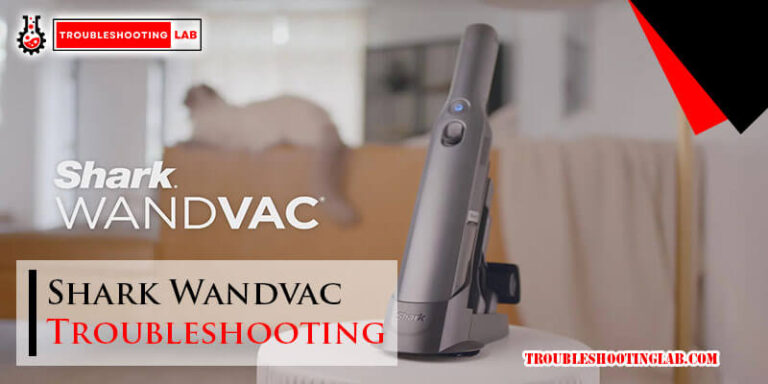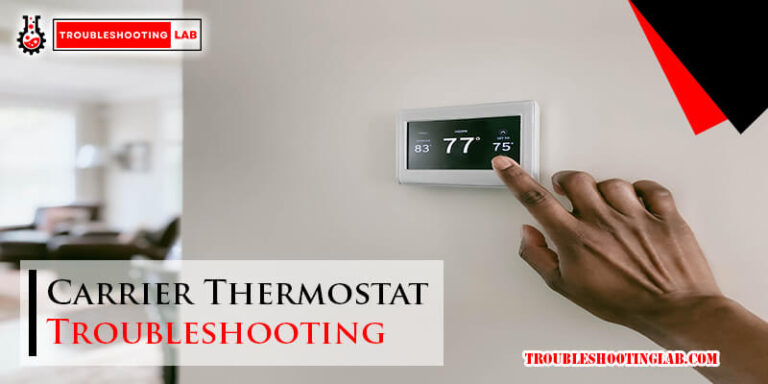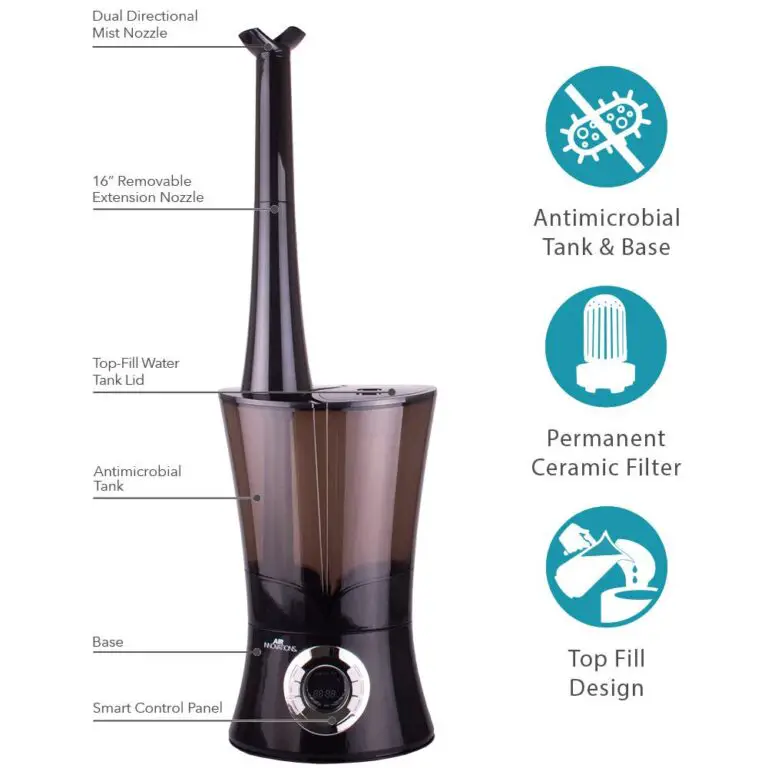Quest Dehumidifier Troubleshooting: Essential Tips and Solutions
Dehumidifiers play a vital role in maintaining indoor air quality. Quest dehumidifiers are trusted by many for their reliability and efficiency.
But even the best dehumidifiers can face issues. Whether it’s a minor hiccup or a major problem, troubleshooting your Quest dehumidifier can save time and money. Understanding common problems and their solutions can help keep your device running smoothly. This guide aims to provide clear and simple steps to identify and fix issues with your Quest dehumidifier.
With this knowledge, you can ensure your home stays comfortable and moisture-free. Dive in to learn how to tackle common dehumidifier problems with ease and confidence.
Common Issues
Quest Dehumidifiers are reliable. But they can experience problems. Knowing how to fix these issues can save time and money. Let’s explore some common problems and their solutions.
No Power
A common issue with Quest Dehumidifiers is no power. Here are some steps to troubleshoot this problem:
- Check the power cord and plug. Make sure they are connected properly.
- Inspect the outlet. Use a different device to check if it works.
- Look at the circuit breaker. It might need to be reset.
If the dehumidifier still does not power on, you may need to contact customer service.
Excessive Noise
Another issue is excessive noise. This can be annoying and may indicate a problem.
Here are some causes and solutions:
| Cause | Solution |
|---|---|
| Loose parts | Tighten all screws and bolts. |
| Dirty filter | Clean or replace the filter. |
| Fan issues | Inspect the fan for damage or debris. |
If the noise persists, the motor might be the issue. You may need professional help to fix it.
Credit: www.questclimate.com
Water Leakage
Experiencing water leakage from your Quest dehumidifier can be frustrating. It’s important to address the issue quickly to prevent further damage. There are several common causes for water leakage that you can troubleshoot on your own.
Blocked Drain
A blocked drain can cause water to back up and leak. Check the drain pan and the drain line for any obstructions. Clear any debris that might be blocking the flow of water. Regular maintenance can help prevent blockages from occurring.
Damaged Hose
A damaged hose can also lead to water leakage. Inspect the hose for any signs of wear or damage. If you find a crack or tear, replace the hose immediately. Ensuring the hose is in good condition is crucial for proper operation.
Poor Performance
Is your Quest dehumidifier not performing as expected? Poor performance can stem from several common issues. Addressing these can restore your dehumidifier’s efficiency. Let’s explore two major causes: incorrect settings and dirty filters.
Incorrect Settings
Check your dehumidifier settings first. The humidity level might be set too high. Lowering the humidity setting can improve performance. Also, consider the fan speed. A low fan speed might not circulate air properly. Increasing the fan speed can enhance air circulation.
Ensure the unit is set to the desired mode. Sometimes, the dehumidifier might be in an energy-saving mode. Switching to a higher performance mode can solve the problem. Verify the settings on the control panel. Sometimes, a simple adjustment can make a big difference.
Dirty Filters
Dirty filters can reduce your dehumidifier’s efficiency. Check the filters regularly. Dust and debris can clog the filters, restricting airflow. Clean or replace the filters to maintain performance.
A clean filter ensures better air quality. It also helps the unit run smoothly. Most filters are easy to clean. Refer to the user manual for specific instructions. Keeping the filters clean is a simple yet effective way to boost performance.

Credit: www.hydroexperts.com.au
Error Codes
Understanding error codes on your Quest dehumidifier is crucial. These codes help you diagnose issues quickly. Below, we will break down common error codes and their meanings. This will help you troubleshoot and fix problems efficiently.
E1 Error
An E1 error code indicates a problem with the temperature sensor. The sensor might be faulty or disconnected. To resolve this, first, check the sensor connection. Ensure it is secure and properly connected. If the connection is fine, the sensor may need replacing. It is best to consult your user manual for detailed instructions. Still having issues? Contact Quest customer support for further assistance.
E2 Error
An E2 error code points to a humidity sensor issue. The sensor might be reading incorrect humidity levels. Start by checking the sensor’s connection. Make sure it is secure and not loose. If the connection is good, the sensor itself might be faulty. You may need to replace the humidity sensor. Refer to your user manual for specific guidance. If the problem persists, reach out to Quest customer support for help.
Maintenance Tips
Maintaining your Quest dehumidifier ensures optimal performance and longevity. Regular upkeep can prevent minor issues from becoming major problems. Follow these maintenance tips to keep your dehumidifier running smoothly.
Regular Cleaning
Clean the filter every two weeks. A clogged filter reduces efficiency. Remove the filter, rinse it under warm water, and let it dry completely before reinstalling. Wipe down the exterior with a damp cloth. This removes dust and debris that can affect performance.
Component Checks
Inspect the power cord for damage. Replace it if you see any fraying or cuts. Check the water collection bucket for cracks. A damaged bucket can cause leaks. Ensure the fan blades move freely. Dust or debris can block them, reducing airflow. Listen for unusual noises. These can indicate internal issues that need professional attention.
Optimal Placement
Finding the best spot for your Quest dehumidifier is crucial for its effectiveness. Proper placement helps maximize moisture control and ensures efficient operation. In this section, we will explore the importance of room size and ventilation.
Room Size
The size of the room significantly impacts the dehumidifier’s performance. A small room requires less power to control humidity, while a large room demands more. Measure your room’s dimensions to determine the right dehumidifier capacity. A dehumidifier with higher capacity suits larger spaces, ensuring optimal moisture removal.
Ventilation
Adequate ventilation is essential for a dehumidifier to work well. Poor airflow can hinder its performance. Ensure the room has proper ventilation to allow air circulation. Place the dehumidifier away from walls and furniture. This positioning enables free air movement and better humidity control.
Consider windows and doors when deciding on the placement. Keep the dehumidifier near sources of humidity but not directly in the path of airflow. This strategy helps in capturing moisture effectively.
Diy Repairs
Are you facing issues with your Quest dehumidifier? DIY repairs can save you time and money. This guide will help you troubleshoot common problems. Learn how to fix your dehumidifier using basic tools and safety precautions.
Basic Tools
Before starting any repair, gather these basic tools:
- Phillips screwdriver
- Flathead screwdriver
- Multimeter
- Flashlight
- Adjustable wrench
A Phillips screwdriver and a flathead screwdriver are essential. These help in opening and closing the unit. A multimeter is useful for electrical checks. A flashlight helps you see small parts and areas. Lastly, an adjustable wrench helps with any nuts and bolts.
Safety Precautions
Safety is very important while doing any DIY repairs. Follow these safety precautions:
- Unplug the dehumidifier before starting any repair.
- Wear rubber gloves to avoid electric shocks.
- Use a dry cloth to clean parts.
- Keep water away from the dehumidifier.
- Read the user manual for specific instructions.
Always unplug the dehumidifier before starting. This prevents any electric shock. Wearing rubber gloves adds an extra layer of safety. Use a dry cloth for cleaning parts. Keep water away to avoid any damage. Lastly, read the user manual for specific instructions related to your model.
Following these steps will help you safely and effectively troubleshoot your Quest dehumidifier. Happy repairing!
When To Call A Professional
Even the best dehumidifiers can face issues. Sometimes, DIY fixes are not enough. Knowing when to call a professional can save you time and money. Let’s explore some scenarios where expert help is needed.
Complex Issues
Some problems are too complex for DIY solutions. For example, electrical issues can be dangerous. If your dehumidifier stops working suddenly, call a professional. They have the skills and tools to fix it safely.
Another complex issue is refrigerant leaks. Only certified technicians should handle refrigerants. Attempting to fix a leak yourself can cause more damage. It may also void your warranty. A professional can diagnose and repair the issue correctly.
Warranty Coverage
Your Quest dehumidifier may still be under warranty. Repairing it yourself can void this warranty. Check your warranty terms before attempting any fixes. Most warranties cover parts and labor for a specified period.
Contacting a professional ensures the repair is done correctly. It also keeps your warranty intact. Professionals are familiar with warranty terms. They can help you navigate the claims process if needed.

Credit: www.youtube.com
Frequently Asked Questions
Why Is My Quest Dehumidifier Not Collecting Water?
The dehumidifier might not be working due to a full water tank, dirty filter, or incorrect settings.
How Do I Reset My Quest Dehumidifier?
Unplug the dehumidifier for 30 seconds, then plug it back in. This will reset the system.
What Does The “e1” Error Code Mean On Quest Dehumidifiers?
“E1” indicates a sensor error. Ensure the sensor is connected properly and not damaged.
How Often Should I Clean The Filter On My Quest Dehumidifier?
Clean the filter every two weeks to ensure efficient operation and prolong the lifespan of the unit.
Why Is My Quest Dehumidifier Making A Loud Noise?
A dirty filter, loose components, or an uneven surface can cause noise. Check and fix these issues.
Conclusion
Troubleshooting your Quest dehumidifier can be simple with these tips. Regular maintenance ensures it runs smoothly. Check filters, power supply, and settings. Fixing minor issues yourself saves time and money. If problems persist, contact a professional. Keep your space dry and comfortable.
Your dehumidifier’s efficiency depends on proper care. Stay proactive and enjoy a healthier home environment.





